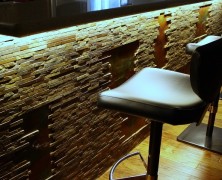LED strip lights deliver extreme versatility in a compact, low profile package. Their customizability is popular with creative lighting professionals everywhere, and this popularity promises to expand greatly as LED prices continue to fall. Obvious applications for flexible strip lights include above cabinet and under counter lighting, and the list continues to grow thanks to increased product development and innovation efforts. Here, therefore, is a quick checklist of the top 5 concerns for lighting designers to compare and choose among different LED strip light products. 1. Lumens Per ____? Every project is different, so determine what matters most before comparing overall lumen output. Lumens per watt, for instance, is most important for LEED and energy-efficient installations, while others may be more concerned with lumens per foot, meter, or reel. 2. CRI Customizable LED chips can be configured to produce a wide variety of lighting conditions. High quality LED strip lights are now capable of producing a color rendering index of 90 and above, rivaling the top lighting options found anywhere on the market today. 3. Certification Choose products that are UL or ETL Listed (U.S. and Europe, respectively), and provide the appropriate LM testing information from the Illuminating Engineering Society to certify claims regarding things like luminous intensity and CRI. 4. Dimming Capability Whether through a simple wall switch or smartphone mobile app, clients want the ability to adjust their lights using a dimmer. Professional grade LED strip lights should be compatible with desired dimming options. 5. Quality of Components LED chip design, heat sink, and PCB quality are among the factors that differentiate one LED strip light from another. These affect light quality, degradation and longevity, not to mention product safety. Look for a supplier who stands by his...






